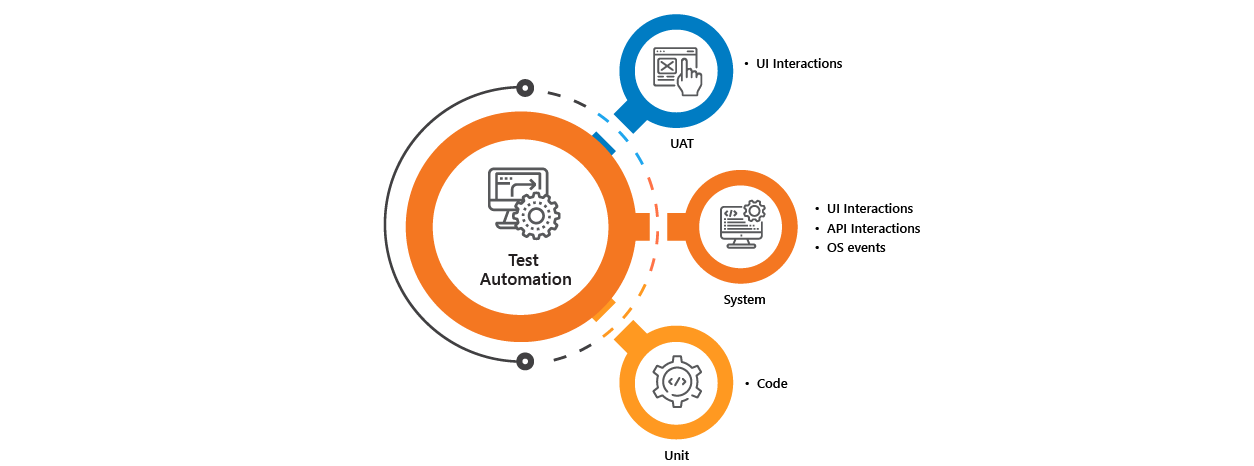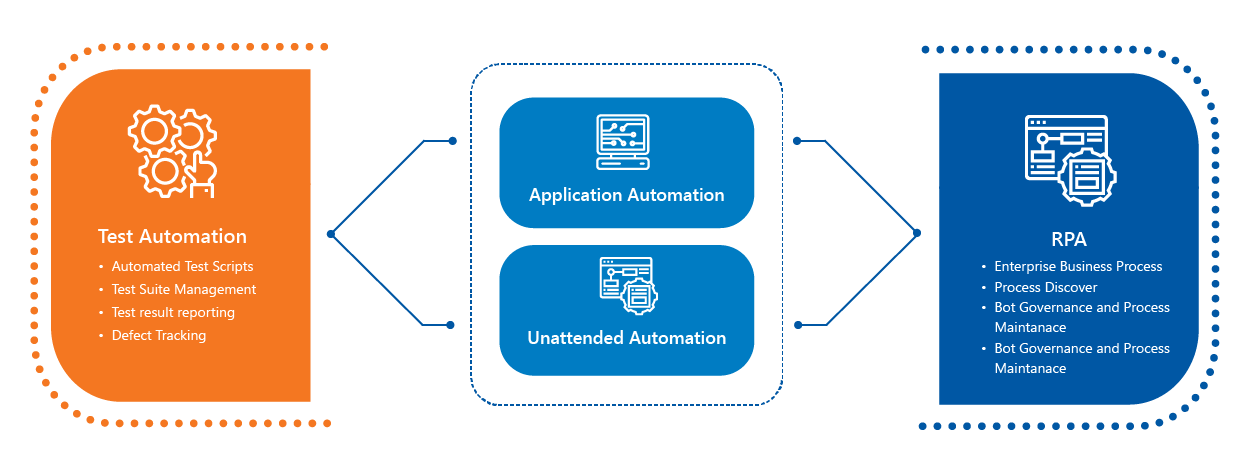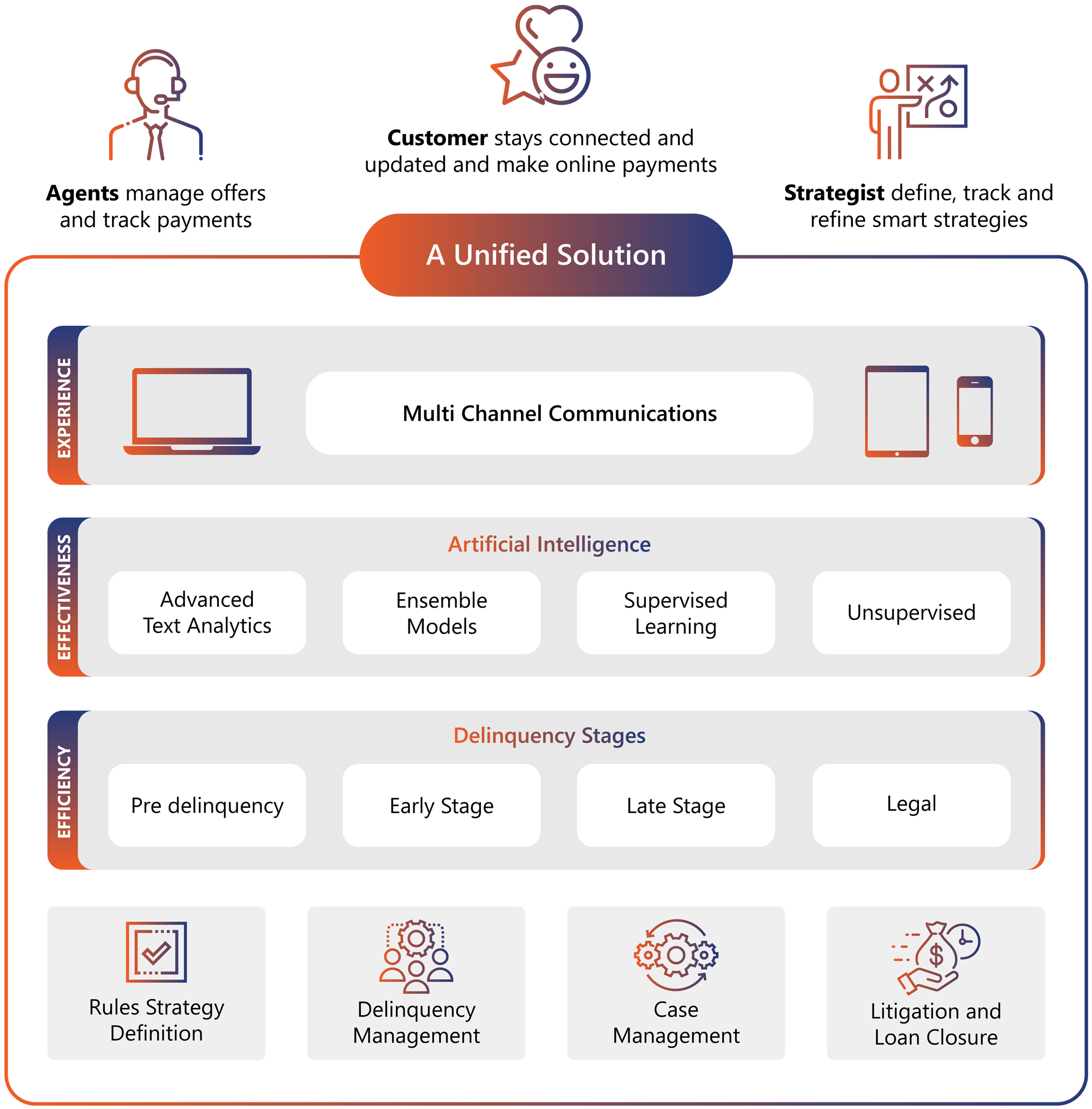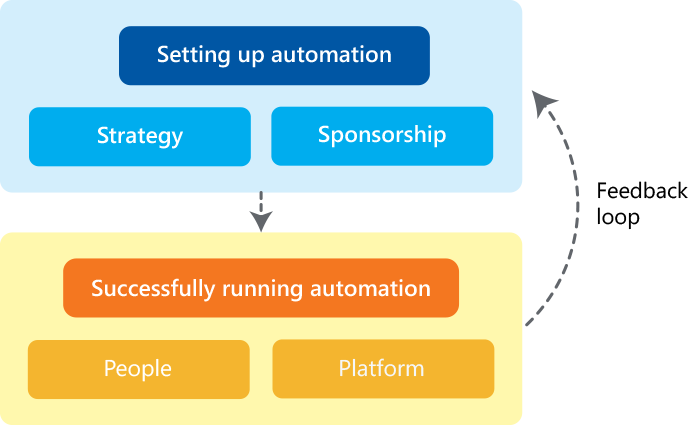Introduction
Software Testing is an integral part of the application development process and it is done to ensure high quality products are delivered. Testing is done at different levels – primary development (unit testing), testing (functional testing) and at business-user level (user acceptance testing). With the application becoming more complex with integration points and focus on increasing productivity, significant number of regression test cases are automated today. This is done to alleviate the cost of executing regression test cases. The idea is not only to reduce the cost but also to increase the accuracy and reduce the number of defects in the product.
Robotic Process Automation (RPA) tools focus on automating business processes to increase productivity, improve efficiency among others. Test Automation was done with a completely different set of testing tools and frameworks until now.
In this article, we will try to find out if RPA and Test Automation are the same or different and if a tester can derive the best out of them both. We will also explore in which phase of Test Automation does RPA fit in? And if AI component of RPA helps in testing.
Is Test Automation a subset of RPA or both are completely different domains? In what phase of Testing and Test Automation does RPA fit in?
Primary business use case targeted by both Test Automation and RPA tools is performing a series of steps on an Application without any user intervention. Steps on application can be performed either at UI level or API level or even at OS event level, which can be achieved by both Test Automation and RPA tool. Albeit, in a Test Automation tool we have to integrate several different frameworks to support UI / API / OS level automation. RPA tools such as AssistEdge provide an integrated one common IDE to perform all.
However, the business purpose of Test Automation and RPA is different. While Test Automation primarily focuses on simulating User Interaction on application under test, checking system output with expected outcome and tries to reduce number of Test Case to be run manually, RPA primarily focus on automating enterprise business process and enabling enterprise achieve increase in productivity. RPA tools such as AssistEdge also help the organization to identify the business processes to automate in order to save cost. In case of Test Automation suite of Test Cases to be automated have to be manually identified by a Test Engineer before he can create Automation script to automate the same.
As a Test Engineer, I would want my Test Automation tool to have features that enable me to do the following:
Do RPA tools have all these features?
For most of the questions above, the answer is yes. While there is a slight deviation from the target audience and business purpose, yet the major RPA players are repurposing Process configuration/Automation engine/reporting framework provided by the RPA tools to support the testing community. This is definitely a win-win situation wherein Testing community gets all the features blended in one product.
While considering different phases of testing, RPA tools probably have none or very little role to play in Automated Unit Testing where unit test cases are written by the development teams to check their piece of code. RPA tools however can play a major role in automation of Functional/Regression and UAT test cases where emphasis is more on user interaction simulation.
The below diagram depicts what RPA and Test Automation share in common in terms of functionality. And how they differ in terms of business purpose and components they possess.
It is clear from the diagram that Robotic Process Automation and Test Automation have application automation in common, however with a different business purpose. And both can be used to complement each other for achieving the desired business objectives.
How can the AI component in RPA augment testing and help testers to discover more relevant test cases?
The first step in Test Automation is to identify the set of Test Cases to automate. And this is where a Test Automation Engineer needs help in identifying the hidden random Test cases that got missed but can identify a potential defect. It is mainly to do with extrapolating but with recent developments in AI; many organizations are trying to create ML models that can identify set of Test Cases for a given application.
Major RPA tools such as AssistEdge have an in-built AI module on which ML models can be built to achieve the desired use case. RPA tools are already helping enterprises to identify business process to automate. Apart from functional test case, ML models can also be built to suggest suitable infrastructure for a given payload, re-adjust runtime configuration based on incoming payload, give alert for any potential security threat that can give a whole new dimension to how RPA can augment Software Testing.
Conclusion
Both RPA and Test Automation tools offer scalable and resilient automation to the end-users. The areas in which RPA can strengthen the Test Automation process is the test case Identification. This can be done through Automated test case discovery, automation scripts creation with minimal coding, parallel script execution for testing in multiple environment and finally identifying defects post test case execution.
Leading RPA players such as AssistEdge offer test modules integrated with the RPA platform. This enables the test engineers to carry out test case management effectively, configure test scripts across any application technology in a single flow, create a test framework with reusable component that can be shared across test automation teams, effectively manage the test suite run and quickly analyze the test results.
This further enables Test Automation teams to create a robust Test Automation suite and deliver high quality software.








